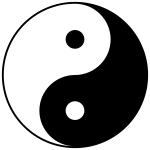- 王菲 faye wong -- 我只在乎你 [2010/10]
- 李敖谈"6.4天安门事件" [2010/07]
- 林忆莲(Sandy Lam): 华语音乐天后 [2010/10]
- 沙皮狗。你见过这么漂亮的小狗狗吗?这些图片可是大爷的。 [2010/04]
- 戴维·卡梅伦: 英国贵族后裔,保守党领袖,下一届英国首相的最有力的竞争者 [2010/05]
- 戴维·卡梅伦 David Cameron: 英国新首相的人生成长 [2010/05]
- 奥巴马医改的通过:对与错;利与弊 [2010/03]
- 大爷给他的好友们的一封信 [2010/06]
- 你能想像中国的性市场完全开放以后会是什么样吗?坐台名媛开保时捷上下班 [2010/05]
- 新疆暴乱,一个海外汉人的感想 [2009/07]
- 针灸:有效还是假象? [2010/04]
- 中国女子的持久的爱-仅以此文在母亲节到来之际献给村中所有的同胞女性 [2009/05]
- Muslim Sensitivity Training - 南方公园 [2010/09]
- 面对六四,民族和解,中国的明天会更美好 [2010/06]
- 美国的医改的僵局:汉密尔顿的大政府主义与杰斐逊的个人民主主义的较量的延续 [2010/03]
- 我家出了一个有病的孩子自称崔永元 [2009/02]
- 我从雅虎上看到的,差点感动的哭了,一定要看完啊 [2010/10]
- 贴一首传哥的老歌:有共鸣更好,没有也无妨-我终于失去了你 [2010/09]
- 小时候最喜欢的爱国主义电影,你可以在youtube看到它的全部。 [2009/04]
- 咱最喜欢的SUV [2010/02]
- 许茹芸 (Valen Hsu)- 淚海 [2010/09]
针灸
| 维基百科的医学内容可能不够正确,所以只能作为参考,并不能视作医疗意见。 任何健康问题均应咨询专业的医护人员。 |
| 中医学 |
 |
| 中医理论 |
| 气 - 阴阳 - 五行 |
| 脏腑 - 经络 |
| 望闻问切 - 辨证论治 |
| 四气五味 - 君臣佐使 |
| 治疗方法 |
| 中药 - 针灸 - 推 拿 |
| 导引 - 气功 |
| 中医经典 |
| 黄帝内经 - 神农本草经 |
| 难经 - 伤寒杂病论 |
| 基础学科 |
| 中医基础理论 |
| 中医诊断学 |
| 中药学 - 方剂学 |
| 温病学 - 针灸学 |
| 中医史 - 各家学说 |
| 临床学科 |
| 中医内科 - 中医外科 |
| 中医妇科 - 中医儿科 |
| 针灸科 - 骨伤科 |
| 中医眼科-中医耳鼻喉科 |
| 民间疗法 |
| 推拿 - 刮痧 |
| 其它 |
| 中医学家列表 |
| 祝由十三科 - 马医科 |
针灸[1]是 在中医学中采用针刺或火灸人体穴位来治疗疾病的 方法。针由远古时代的骨针、石砭开始发展到长短、大小、式样、材料、方法各不相同的针具,如电针、磁针、水针 等;灸偏向于传统的艾灸,有艾绒灸、艾条灸等,现代医学中采用红外线照射也有类似作用。现代使用的针灸多是钢针,而在古代多使用的是银针, 其功效要比钢针好。
相传伏羲氏创九针。为九种针具的总称。出《黄帝内经》。即镵针、员针、鍉针、锋针、铍针、员利针、毫针、长针和大针。《灵枢·官针》:“九针之宜,各有所为; 长短大小,各有所施也,不得其用,病弗能移。”指出九针的形状、用途各异,据情选用,方可去病。
针与灸是治疗方法的两个方面,多用针法来治疗急性病,用灸法来治疗慢性病。中医学中针灸治疗的理论基础在于传统的中医脏腑阴阳经络学说。和中医的方剂治 疗方法相比较,针灸治疗的特点是疗效快、简单、便宜。
|
目录
[隐藏]
|
针灸起源于中国,具有悠久的历史。针刺法萌发于新石器时代,当人们发生某些病痛或不适的时候,不自觉地用手按摩、捶拍,以至 用尖锐的石器按压疼痛不适的部位,而使原有的症状减轻或消失,最早的针具:砭石也之而生,随着古人智慧和社会生产力的不断发展,针具逐渐发展成青铜针、铁 针、金针、银针,直到现在用的不锈钢针。相传,华夏文明的始祖伏羲是中医针灸的发明人。伏羲氏不仅画八卦, 结绳为网,教民田猎,而且“尝百药而制九针”(东汉皇甫谧记载于《帝王世纪》)、“尝草制砭”(南宋罗泌记 载于《路 史》)。砭就是砭石,即华夏民 族最早的针灸。灸法的起源与为的发现和使用有着密切的关系,当身体有某种不适时,用以去烘烤得以减轻,继而用各种树枝作为施灸工具,逐渐发展到艾灸。
针灸治疗方法是在漫长的历史过程中形成的,其学术思想也随着临床医学经验的积累渐渐完善。1973年长沙马王堆三号墓出土的医学帛书中有《足臂十一脉灸经》和《阴阳十一脉灸经》,论述了十一条脉的循行分布、病候表现和灸法治疗等, 已形成了完整的经络系统。《黄帝内经》是现存的中医文献中最早而且完整的中医经典著作,已经形成了完整的经络系统,即有十二经脉、十五络脉、十 二经筋、十二经别以及与经脉系统相关的标本、根结、气街、四海等,并对腧穴、针灸方法、针刺适应症和禁忌症等也做了详细的论述,尤其是《灵枢经》所记载的针灸理论更为丰富而系统,所以《灵枢》是针灸学术的第一次总 结,其主要内容至今仍是针灸滨核心内容,故《灵枢》称为《针经》。继《内经》之后,战国时代的神医扁鹊所 著《难经》对针灸学说进行了补充和完善。
晋代医学家皇甫谧潜心钻研《内经》等著作,撰写成《针灸甲乙经》,书中全面论述了脏腑经络学说,发展并确定了349个穴 位,并对其位置、主治、操作进行了论述,同时介绍了针灸方法及常见病的治疗,是针灸学术的第二次总结。
唐宋时期,随着经济文化的 繁荣昌盛,针灸学术也有很大的发展,唐代医学家孙思邈在其著作《备急千金要方》中绘制了彩色的"明堂三人图",并提出阿是穴的取法及应用。到了宋代,著名针灸学家王惟一编撰了《铜人腧穴针灸图经》,考证了354个腧穴,并将全书刻于石碑上供学习 者参抄拓印,他还铸造了2具铜人模型,外刻经络腧穴,内置脏腑,作为针灸教学的直观教具和考核针灸医生之用,促进了针灸学术的发展。
元代滑伯仁所者的《十四经发挥》,首次将十二经脉与任、督二脉合称为十四经脉,对后人研究经脉 很有裨益。
明代是针灸学术发展的鼎盛时期,名医辈出,针灸理论研究逐渐深化,也出现了大量的针灸专著,如《针灸大全》、《针灸聚英》、《针灸四书》,特别是杨继洲所著的《针灸大成》,汇集了明以前的针灸著作,总结了临床经验,内容丰富,是后世学习 针灸的重要参考书,是针灸学术的第三次总结。
清初至民国时期,虽然针灸医学由兴盛逐渐走向衰退,但由于针灸深得民心,故仍有《针灸逢源》等著作流传下来。
中华人民共和国成立50年以来,以继承为基础,结合现代医家的临床经验和科研成果,出版了大量的针灸学术专著 和论文,还成立了中国针灸学会,学术交流十分活跃,首创"针刺麻醉"。针灸的研究也从单一的文献整理发展到对其治病的临床疗效进行系统 的观察,结合现代生理学、解剖学、组织学、生化学、免疫学、分子生物学等学科进行针灸治疗的机理探讨,取得了可喜的成就。
针灸学虽源于中国,但早在公元6世纪就传到了朝鲜、日本等 国。近年来,随着中外文化交流的不断深入,针灸也随之传到世界各地。为了加速针灸医学的广泛传播,在中国北京、上海、南京设立了三大国际针灸培训中心,以培养世界各地的针灸人才。1987年成立了世界针灸学会联合会(简称"世界针联"),推动了针灸事业的不断发 展。
针灸灸疗法包括针刺和灸灼两种不同的治疗方法。针刺法也称针治法,是运用一定的操作手法,把金属制成的、形体细长而尖的针刺入人体的某一固定的部位 (穴位),使接受针刺才发生酸、麻、胀、重等感觉,从而产生治疗疾病的作用。灸灼法也称为灸治法,是将艾 绒揉成小团或长条状,点燃后放在(或靠近)人体体表的某些固定的部位,施行热熨或熏,从现时达到治疗疾病的目的。
[编辑] 原理中医学认为,人体中的经络系统负责输送全身的“气”、“血”及“津液”,这些输送物质在体内循环,使身体中的各个组织与器官保持平衡与稳定。然而当 经络系统出现阻塞不通的情况时,则影响了这些物质的输送,使“邪气”(各种产生病变的因子)侵入,此时人体就会开始出现异常病变。当针灸的针插进人体之 后,会引起人体自身的反应,加强气血循环,克服经络的阻塞,使经络系统恢复正常,病症因此得以治愈。
[编辑] 对针灸的质疑对于针灸的质疑,主要是因为针灸的理论基础源于中医学,与现代医学的思维模式相距甚大。中国科学界对于针灸的研究已经有半个世纪,特别是针刺麻醉或者针刺止痛原理的研究,居于世界前列。[来源请求]。
世界卫生组织(WHO)在1979年所出版的刊物中认可针灸在某些症状中有治疗作用[2]。Cochrane Collaboration的科学家认为针灸对戒烟、气喘、抗类风湿关节炎、头疼等问题没有效用。2007年9月《内医档案》杂志刊登,德国雷根斯堡大学的迈克尔·哈克博士主持的实验使用1162名腰痛病患分3组分别进行针灸、假针灸和常规治疗对比试验。发现腰痛情况好转的人,针灸组有47.6%,假针灸 组有44.2%,常规治疗组有27.4%。针灸组和假针灸组没有统计学意义的差别。[3][4]2009 年西雅图的一个研究小组主持的研究表明,对长期腰疼患者,针灸和假针的治疗效果都比传统方法好,但是针灸和假针的疗效没有显著差异。[5]
世界卫生组织在2003年发表了《Acupuncture: Review and Analysis of Reports on Controlled Clinical Trials》,认为有对照试验证实针灸可 有效治疗若干疾病、症状或状态,针灸对于另外一些病症的疗效尚需要更多证据确认,同文又列出了疗效未有足够证据支持,但是可尝试针灸的一些病症。[6]
根据2002年一项全国性调查的结果,全美有八百二十万成年人曾经使用过针灸,有二百一十万人曾在过去一年内进行过针灸。[7]
美国国立卫生研究院(NIH)下属十七个研究所或中心,其中有美国国立替代与补充医学中心(NCCAM),专门从事研究 包括中医、针灸在内的“非西方主流医学”,其中针灸是研究的热门之一,不仅NCCAM对其有很多的立项,[来源请求]1997年NIH的一份报告指出:临床前研究 记录了针灸在某些疾病治疗方面有一些效果,但同时在一些其他研究中没有效果。[8]
[编辑] 美国的针灸界美国目前有大约3万多名执照针灸师(有的州称为针灸医师或东方医学医师),5千多名应用针灸的西医师。美 国有严格的针灸执照考试制度,要求考试申请人在美国高教部认可的针灸或中医学校学习针灸的相关课程1700到4000学时。[9]
[编辑] 注释- ^ 拼音:zhēn jiǔ,注音:ㄓㄣ¯ ㄐ一ㄡˇ
- ^ Bannerman RH. 1979 “针灸:世界卫生组织的看法”世界卫生组织(英文)
- ^ 哪里来的穴位?哪里来的经络?快看德国最新研究报告
- ^ 德实验发现:中医针灸治疗腰痛比物理治疗更有效,广州日报
- ^ Cherkin DC, Sherman KJ, Avins AL, et al. A Randomized Trial Comparing Acupuncture, Simulated Acupuncture, and Usual Care for Chronic Low Back Pain. Archives of Internal Medicine. 2009;169[9]:858–866.
- ^ Acupuncture: Review and Analysis of Reports on Controlled Clinical Trials,第23-26页。(非pdf版见[1])
- ^ http://nccam.nih.gov/health/acupuncture/introduction.htm
- ^ [2])
- ^ 请参看www.nccaom.org.














 There's nothing wrong with 赚眼球 since most people come here for fun,part of which is get some attention.I understand you may mean some folks are not up to your or whatever standard.Well even if that's true,why should they? Relax your honor
There's nothing wrong with 赚眼球 since most people come here for fun,part of which is get some attention.I understand you may mean some folks are not up to your or whatever standard.Well even if that's true,why should they? Relax your honor 乱写几句,喝杯啤酒消消火:)
乱写几句,喝杯啤酒消消火:)